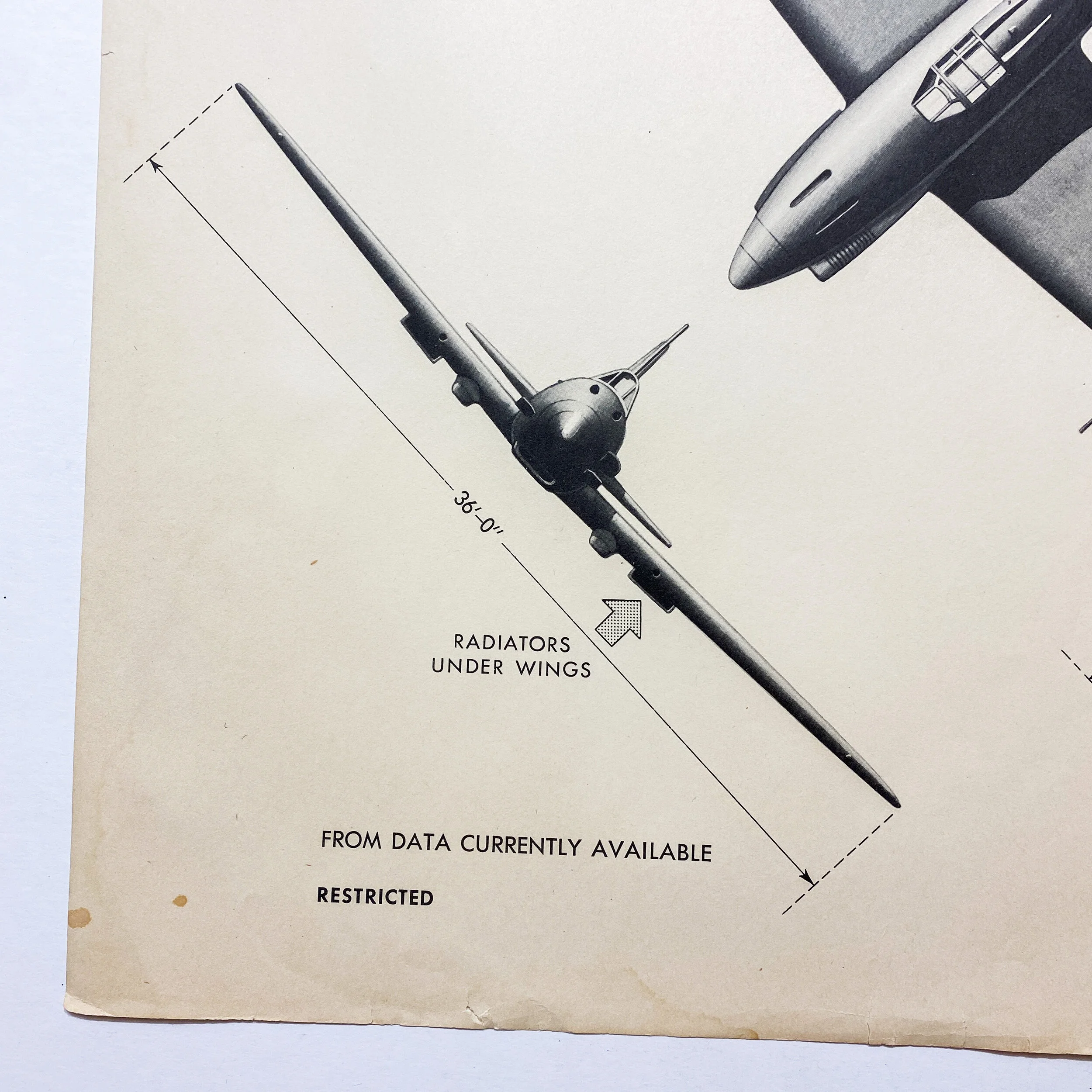Italy Fighter Reggiane Re-2001 Aviation Training W.E.F.T.U.P. ID Posters








Italy Fighter Reggiane Re-2001 Aviation Training W.E.F.T.U.P. ID Posters
Size: 19 x 25 inches
This original ‘RESTRICTED’ aircraft identification poster was published by the U.S. Naval Aviation Training Division Feb. 1943. This poster was posted as a training tool as well as an in theater ID poster to help U.S. and other Allied pilots, bomber crews and Naval personal to identify Allied and enemy aircraft. W.E.F.T.U.P. or Wing, Engine, Fuselage, Tail, Undercarriage, Peculiarities was a system set up for the purpose of aircraft identification and recognition.
World War II saw some of the first introduction of these aircraft ID poster to prevent friendly fire and more accurate plane recognition in combat. It was believed these posters alone could save countless lives from friendly aircraft-on-aircraft or friendly anit-aircraft fire. These posters also could cut down precious second pilots, bomber gunners, and naval gun crews would have to ID a plane flying towards them intern saving their lives by shooting first.
Each poster provides the silhouettes, dimensions, and relevant information to educate both air and ground personnel in aircraft identification. Immediate identification of aircraft, friendly or not, was essential in order for the observer (whether in the air e.g., pilot, gunner, or patrol observer, or on the ground, e.g., anti-aircraft crew) to determine his next course of action (e.g., acknowledge, attack, evade, or report). Each poster details a large clean sky and background image of the specified aircraft located as the main top imagine on the poster. It also contains important ‘peculiarities’ such as where certain gun emplacements are located, other special aircraft features, as well as wing and length measurements.
Italy Fighter Reggiane Re-2001:
The Reggiane Re.2001 Falco II was an Italian fighter aircraft, serving in the Regia Aeronautica (Italian Air Force) during World War II. A contemporary of the renowned Macchi C.202, the production of this type was to be limited to only 252, but it was a flexible design that proved to be able to undertake a number of roles. Thanks to its maneuverability it could dogfight with more powerful opponents like the Supermarine Spitfire. The Re.2001 became the basis of a later, more formidable fighter, the Re.2005.
The Re.2001 reached operational status late in 1941 with 2° Gruppo (part of 6° Stormo) that had returned from North Africa without aircraft in September 1941. Its three Squadriglie, 150ª, 152ª and 358ª, were based at Gorizia and then relocated to Rome-Ciampino in December. But due to technical reasons the unit was not fully equipped and trained until February 1942. Finally, on 4 May 1942, it moved to Caltagirone, in Sicily, with 18 Reggianes, under command of Colonnello Bajlon. In May 1942, Re.2001s began to fly escort missions over Malta, encountering British Spitfire Mk Vs. The first encounter took place on 12 May, when 15 Reggiane 2001s of 2° Gruppo, while escorting (with Macchi MC.200s) three Savoia-Marchetti SM.84 of 4° Gruppo, were attacked by nine Spitfires, and the Reggiane downed two British fighters for no losses to themselves. During the violent air combat, the Supermarine fighters shot down a Regia Aeronautica bomber and badly damaged the other, but the Reggiane pilots quickly reacted and shot down two Spitfires, one by Sergente Paolo Morcino, that had to make a crash-landing (just like his commander) close to Ispica, as his undercarriage had been damaged by a 20 mm cannon shell. That day actually the RAF lost three Spitfires: one pilot, Sergeant Charles Graysmark of 601 Sqn was killed and another, Sergeant Cyril 'Joe' Bush of (126 Squadron), wounded. Pilot Officer Michael Graves, 126 Sqn, was also shot down but bailed out uninjured. In the afternoon of 15 May 1942, 19 Re.2001s flew to the airfields at Malta on a hunting spree. Dogfights took place over the southern part of the island and according to the Italians, the Allies lost four aircraft, three falling into the sea east of Valletta and the fourth, south of Kalafrana. Re.2001 MM.7210, hit during the dogfight, made an emergency landing at Comiso, in Sicily. On 18 May, eight Re.2001s led by Tenente Remo Cazzolli of 152ª Squadriglia flew to Malta in support of a maritime/land reconnaissance of the island. The Re.2001s were attacked by four Spitfires of 249 Squadron, three pilots each claiming a Reggiane. Later records show that Cazzolli, a Spanish Civil War veteran, was the lone victim, crashing north of Fort San Leonardo, near Marsaskala, and was captured. By the end of June, 22° Gruppo based at Rome-Ciampino received their first Re.2001 CBs and redeployed to Monserrato, Sardinia. They were later transferred to Sicily to participate in the raids on Malta. On 12 July, over Malta, Canadian ace "Buzz" Beurling from 249 Sqn shot down the Reggiane Re.2001s of Tenente Colonnello Aldo Quarantotti and Tenente Carlo Seganti, of 150ª Squadriglia Caccia, mistaking them for Macchi C.202s. But two days later, he was in turn badly shot up by Reggianes. Beurling's aircraft was "riddled by better than 20 bullets through the fuselage and wings". "An explosive bullet nicked my right heel", he recalled. Generally slower than contemporary fighters, still the Reggiane against the Hawker Hurricane fared better and could take on this opponent on a more equal basis, although the Hawker was noticeably faster at most altitudes. The Spitfire V had an even more greater speed advantage. especially above 7,000 m (23,000 ft). However, at lower and medium altitudes, the Re.2001 was able to hold its own and, in the hands of an expert pilot, as ace Laddie Lucas recalled in his Malta: The Thorn in Rommel's side, the Reggiane could be a difficult and dangerous opponent for the Spitfire V.